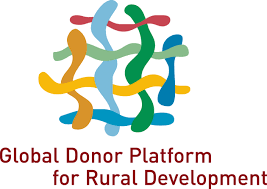Community / Land projects / Green Prosperity Project/Participatory Land Use Planning Activity
Green Prosperity Project/Participatory Land Use Planning Activity

$43100000
04/13 - 04/18
Completed
This project is part of
Implementing Organisations
Donors
Data Providers
General
The compact’s $332.5 million Green Prosperity Project is designed to increase productivity and reduce reliance on fossil fuels by expanding renewable energy, and to increase productivity and reduce land-based greenhouse gas emissions by improving land use practices and management of natural resources. The Green Prosperity Project includes a $43.1 million Participatory Land Use Planning (PLUP) activity to support participatory land use planning - administrative boundary setting, updating/integration of land use inventories and enhancing of spatial plans at the district and provincial level to support investment in renewable energy and sustainable management of natural resources. In general, the PLUP Activty is designed to: (i) put in place the foundational spatial (land use) planning elements needed to enable and sustain the specific investments in renewal energy and natural resource management funded by the GP Investment Facility; (ii) improve land use certainty for communities within the districts selected for GP investments; and (iii) support compliance with environmental and social performance standards and safeguards. Specifically, the PLUP is expected to: (i) enhance the technical capacity of provincial and district governments in spatial (land use) analysis, planning and enforcement; (ii) identify and, when possible, reduce land use and land tenure disputes as a means to improve the investment climate for renewal energy and natural resource management projects; and (iii) empower communities by providing spatial (locational) certainty through participatory geo-location and demarcation of village boundaries and the mapping of critical natural and cultural resource areas within these villages. Compact funding will finance the completion of the following technical activities. 1) Participatory village boundary setting and community mapping (VBS/CM), including: (i) the development of district level guidelines for participatory setting of village boundaries using established Government processes combined with international best practices, modern survey and mapping technology and including participation of the community, in particular women and disadvantaged groups; (ii) the participatory determination, geographic delineation and physical demarcation of village boundaries in targeted sub-districts (kecamatan) of selected districts; (iii) identification and resolution, as possible, of land use and tenure disputes; and (iv) the collection of geo-spatial data and mapping of critical natural and cultural resource areas within the mapped villages. 2) Creation of sub-district (kecamatan) level land use inventories and integration of land and other natural resource information, including: (i) compilation of and georeferencing of existing and pending licenses and permits for land and natural resource use, other use rights, community claims, and select biophysical data and creation of sub-district level land use inventories; (ii) technical assistance to relevant provincial and district government agencies to support integration, management and exchange of geo-spatial data and to make land information widely available to the public . 3) Capacity building for spatial planning and resource management at the provincial and district government level enhancement of district spatial plans, including: (i) investments in computer and mapping equipment, GIS software, training and technical assistance for provincial and district Bappeda offices and the office of the Bupati, to improve spatial analysis and the use, updating and enforcement of spatial plans; and improve effectiveness and transparency in licensing, permitting and decisions on land use.



